




Wildlife was a recurring theme at the recent Manitoba Beef Producers AGM, whether it was issues around problem predators like wolves and coyotes or concerns with damage to crops and livestock and inconsistency with compensation programs.
Several of the resolutions passed at the AGM were related to these ongoing issues, including an MBP board of directors resolution that recommended MBP continue to work with industry partners and the provincial government to develop a traceability app for cattle operations to help with needed information sharing, and to create a Livestock Investigations Unit in Manitoba to help reduce livestock-related crime.
In speaking to the resolution, Mary Paziuk of District 13 spoke to the RCMP’s general lack of knowledge about livestock and the importance of having people who are familiar and trained to deal with livestock issues.

Corporal Owen Third couldn’t agree more. In his presentation about his role as an RCMP Livestock Investigator based in Saskatchewan, he acknowledged that many local detachment members do not have specialized training to deal with livestock issues.
“In a lot of cases, knowledge is an issue, so not only knowledge investigating livestock matters, but just the industry itself can be tricky for a lot of our RCMP,” Third said. “We have recruits that maybe don’t have a farming background; they don’t know the difference between a heifer and a steer.”
Frustrating for producers
That lack of livestock knowledge and experience can cause frustration for producers who have a complaint. “You want someone to help you with your concern and know exactly what you are talking about,” Third said.
That’s where Third comes in. He is well qualified for his job, having been a farmer, then working for the Credit Union system for 15 years before joining the police force at the age of 32.
“After my detachment work for four years, my Credit Union experience allowed me to get into the plain clothes area, dealing with financial crimes, and believe it or not, paper cows were an issue 14 years ago,” he said. “Livestock has always been an issue when it comes to investigating some of these crimes.”
Third is one of only four RCMP Livestock Investigators in Canada and his role is to work directly with producers, as well as support RCMP detachments that have reports of livestock crime.
“My role in Saskatchewan is to provide investigative support to all of our detachments,” he says. “Anyone with livestock or ag-related issues can reach out to myself, and I will follow up and provide guidance and assistance on those files. I want to make sure that the producer’s concern is addressed, because in some cases our busy detachments are dealing with person crimes, assaults, and that sort of thing.” page 4


With Manitoba Beef Producers’ 45th AGM in the books, we look ahead to another year and the challenges and opportunities it brings. As was consistent with most of our unusually mild winter, we weren’t challenged, as we traditionally are during our AGM, with some of the coldest days of the winter. For a change, it was the warm weather with snow and rain leading to some challenging road conditions, meaning unfortunately some of members and one of our guest speakers could not attend.
However, it was nice to see many familiar faces, along with some new ones and to have a chance to catch up with friends and also learn a few things along the way. We also appreciate the elected officials who took time to attend, including Manitoba’s Minister of Agriculture.
The AGM is an important opportunity for members of the cattle industry to engage, discuss challenges and to seek direction to overcome them. It’s also a good opportunity to let members know what we have been doing on their behalf over the past year.
There are countless irons in the fi re for MBP any given point in time that continually need attention. The topics we saw dominate conversations at this year’s AGM were certainly predation and security of livestock. And of course potential drought and weather-related challenges remain a concern.
In many areas of the province, we have seen an increase in predator interactions with livestock that have certainly identified some challenges along the way that we need addressed. Some resolutions on this topic were passed at the AGM and MBP will continue to work with

departments like agriculture and natural resources, as well as Manitoba Agricultural Services Corporation on strategies to reduce risk and to address compensation concerns. See page 5 for more details.
Livestock security, whether that is the ability to have better peace of mind on your own livestock when it comes to potential crime, or for lenders to feel they have a sufficient level of security in place to be comfortable extending credit on livestock purchases is very important. Th is is a very complex issue with a lot of parts to figure out and it is also reliant upon having knowledgeable enforcement within the RCMP when issues or concerns arise. A resolution was passed regarding the need for a livestock investigation unit in our province to help assist in resolving livestock-related. There was also a presentation on livestock inspection and how it assists in investigating such crimes.
Finally, weather-related concerns exist. While they were patchy, we saw some very dry regions in the province last fall. We then saw no real fall rain events or snowstorms to date and are now well through winter, with many of us still looking at bare fields that are going to look very dry come spring without some significant snowfall or spring rain events. MBP is speaking with
provincial government staff on a regular basis as everyone continues to monitor the conditions.
At the AGM we recognized Dr. Allan Preston with MBP’s Lifetime Achievement Award for his decades-long dedication to advancing Manitoba’s beef industry. He certainly is a deserving recipient and we cannot thank him enough for his continued support for the sector.
At this year’s AGM, it was sad to see director Nancy Howat retire from the board. Nancy was a great board member who will be missed. She sat on many committees and the executive, in particular doing an outstanding job chairing the Communications Committee. Nancy also did a great job representing Manitoba, sitting on the Canadian Cattle Identification Agency board. She always brought a great voice and good discussion to the board, along with a sharp wit and great sense of humor.
On the fl ip side, we have two new directors on the board, with Mark Schram replacing Nancy as District 2 director and Brian English, fi lling the vacant director seat for District 6. They bring strong voices to the Manitoba Beef Producers’ board. It is great to see all 14 director spots fi lled and a full board, from many different backgrounds and experiences, to bring their perspective to the issues and opportunities we face.
With our new board and executive in place, and a great team of staff, we are ready to forge ahead on another year addressing the existing matters of concern, the new challenges that will inevitably arise, as well as the opportunities to advance our sector.

DISTRIC T 9
and Two Borders
DISTRIC T 2
MARK SCHRAM
Argyle, Cartwright-Roblin, KillarneyTurtle Mountain, Lorne, Louise, Pembina, and Prairie Lakes
DISTRIC T 3
ANDRE STEPPLER
Cartier, Du erin, Grey, MacDonald, Portage la Prairie, Rhineland, Roland, Stanley, Thompson, Montcalm, Morris, and Ritchot
DISTRIC T 4
BYRON FALK
De Salaberry, Emerson-Franklin, Hanover, La Broquerie, Piney and Stuartburn, Montcalm, Morris, Ritchot, Spring eld, Ste. Anne, Taché, R.M. of Piney and Reynolds
DISTRIC T 5 STEVEN MANNS Cornwallis, Elton, Norfolk-Treherne, North Norfolk, Oakland-Wawanesa, Glenboro-South Cypress, and Victoria
DISTRIC T 6 BRIAN ENGLISH Pipestone, Riverdale, Sifton, Souris-Glenwood, Wallace-Woodworth, and Whitehead
DISTRIC T 7 T YLER FULTON 2ND VICE-PRESIDENT
Ellice-Archie, Hamiota, Prairie-View, Riding Mountain West, Rossburn, Russell-Binscarth, and Yellowhead
DISTRIC T 8
MATTHEW ATKINSON
Clanwilliam-Erickson, Glenella-Lansdowne, Harrison-Park, Minto-Odanah, Oakview, North Cypress-Langford, Rosedale, and West Lake-Gladstone
Greetings all,
Th is is my post 45th Manitoba Beef Producers’ AGM column, so I’ll be short and sweet.
What an event it was! I will start by thanking all attendees, sponsors and trade show exhibitors for braving the winter roads and making our event so successful. Thank you to the speakers who provided the delegates with such valuable information. Thank you to Agriculture Minister Ron Kostyshyn and all the other elected officials who took time from their busy schedules to bring greetings and to engage with our producers. Thanks as well to staff from various departments and agencies for coming out and interacting with the delegates.
Thank you to the staff at Brandon’s Victoria Inn Hotel and Conference Centre for the hospitality. Thank you to Howling Pro for your wonderful AV support to keep the meeting running smoothly. Thank you to our dedicated staff. Th is event wouldn’t happen without all their organizational work. Thank you to our board of directors for their exhaustive commitment and passion for the industry they love. Overall, thank you, thank you, thank you.
I was very impressed with the level of engagement this year. The speakers’ various presentations led to great conversations in and around the meeting. My favorite part of the AGM is the side conversations that spark such good thought. It’s those talks and that relationship building that really make the AGM a worthwhile event to attend.





The AGM banquet is also a really important part of that relationship building. I was very happy with how things went this year. It was bittersweet to recognize outgoing District 2 director Nancy Howatt for her ef-
forts, as it means she is leaving the board after completing three terms with us. It was also great to honour Dr. Allan Preston for his decades-long contributions to the beef sector. Recognizing the Association of Manitoba Community Pastures as our 2023 winner of The Environmental Stewardship Award (TESA) was great part of the evening too. I also liked fi nishing the evening with some laughs, and this year comedian Aisha Alfa sure brought those for our attendees.




I will keep this column short this month. The AGM is a big lift for MBP every year, so I am happy to be able to rest, recover, and recharge for the 2024 production year, and to continue working diligently on behalf of producers here in Manitoba for the betterment of the sector. With refreshed direction following the business portion of our meeting, we have lots of things on which to continue to work. Carson


GOLD
GOLD
Boehringer Ingelheim
Boehringer Ingelheim







Cleanfarms
Cleanfarms Covers
Covers
Elanco Animal Health
Elanco Animal Health
Enns Brothers
Enns Brothers
Manitoba Agricultural Services Corporation (MASC)
Manitoba Agricultural Services Corporation (MASC)
NDEco
NDEco
Trouw Nutrition
Trouw Nutrition
WeCover Structures SILVER
WeCover Structures
SILVER
Alert-Agri
Alert-Agri Distributors /P. Quintaine & Son Ltd.
Dairy Farmers of Manitoba
Kane Veterinary Supplies
Manitoba Veterinary
Paddock Drilling Ltd.
Two new directors were ratified to Manitoba Beef Producers’ board of directors at the 45th MBP Annual General Meeting in Brandon on February 8.
Mark Schram has become the director in District 2, replacing Nancy Howatt who had completed her three terms as an MBP director, and Brian English is the new director in District 6, fi lling a vacancy there.
Mark Schram – District 2

Mark is a third-generation producer who runs a 200 head cow/calf operation just south of Cartwright that he took over from dad, Fraser about 10 years ago.
When he was fi rst approached about running as an MBP director he had to think about the time commitment, because he and wife Sarah have two small children; son, Sawyer, who is four and daughter, Dorothy who is 16 months.
In the end he agreed because he is interested in the positive environmental story that the beef industry has to tell.
“That’s one of the best stories we can tell in the beef industry, and the regenerative side of things is doing that well, and I think everyone is profiting from that right now, so it’s a story we need to keep telling,” he says.
Mark is a regenerative producer himself, employing 13 paddocks with three to five day grazing periods in each. He has converted all his pastures to perennial forage, which he says is more resilient to drought on his sandy soils.
He also hopes to help connect with younger producers and encourage them to get more involved in the industry.
“I am hoping to be able to connect people and in particular young people with what MBP is doing and maybe get them a little more engaged, whether that’s by coming to meetings or getting them talking a little
more,” he says.
There are hurdles ahead for beef producers, Mark says, with high land prices being top of the list, but he believes there are many ways that producers can be more efficient and profitable and demonstrate the importance of the industry in terms of its wider ecological value.
“We are perfectly positioned to be the best conservationists out there, especially in a world where there are a lot of trees getting torn out, and people are getting rid of water,” Mark says. “With cattle all of those things add value to us as producers and to society, so I think we can get a little leverage by telling that story as long as we continue to back it up with good management.”
Brian English – District 6

Brian and his son, Connor, are the fourth and fi ft h generations on the cow/calf operation and feedlot established by Brian’s great-grandfather in 1898 in the rural municipality of Riverdale. He and wife, Leanne are proud new grandparents to baby Colter, who was born in November 2023. The couple also have another son, Brendon, who is a wind turbine technician at Castor, Alberta.
Brian was raised to be involved in his community, and has been a soccer coach, safety for local hockey teams, a curling league rep, and recently sat on the organizing committee for the Rivers and District Pipe Band Reunion that was held last summer.
With Connor returning full-time to the farm two years ago, the time was fi nally right for Brian to serve as an MBP director, so when Melissa Atchison suggested he might step into the
Page 1
Working closely with Livestock Services
Th ird works closely with Livestock Services of Saskatchewan (LSS), the agency that provides cattle inspection services in Saskatchewan at auction marts. Annually, LSS works with the RCMP on reports of around 600 head reported missing or stolen each year.
“When I get a call from a detachment or directly from a producer, I will reach out to LSS and start asking them some questions to provide manifests and look at the system for sales and that sort of thing and sometimes they will contact me,” Th ird says. “The inspectors know the producers better than I do, or than our detachment members.”
Jason Pollock, CEO of LSS emphasized in his presentation at the MBP AGM, that their partnership with the RCMP and with its Livestock Investigation Unit, has greatly improved outcomes when it comes to livestock crimes.
“We have counted a significant improvement in the ability for us to see fi les that have suspicious activity, or elements in it that need further work,” Pollock said. “And to be able to hand it over to the RCMP and have an individual able to shepherd that fi le through to completion, either mowing forward with charges or solving the dispute.”
Th ird has been in the role of Livestock Investigator for about a year and a half and deals with serious crime issues such as livestock theft and fraud, as well as disputes between farmers over things like straying cattle damaging crops and concerns over grazing costs when transporting cattle.
role as District 6 director, he agreed, and says he is keen to learn and to help strengthen the beef industry.
While Brian believes that there are undoubtedly challenges ahead, there is also lots of innovation and opportunity that can provide good prospects for the next generation of beef producers.
Brian and Connor are adopting regenerative practices on their farm and direct market a lot of their beef, which has taught them the value of being open and transparent about their practices, which they do largely through social media.
Part of that motivation came from an incident several years ago, when his sons were in elementary school. A teacher sent a note home that they should not bring meat to school for lunch the following day as it was ‘be kind to animals’ day. After a phone call to MBP, and with the help of Agriculture in the Classroom staff, Brian was able to visit the school and tell the real story about beef production.
“We live in a community based on agriculture and I was dumbfounded by the number of kids who didn’t know what went on at a farm,” he says. “So, we try hard to educate people whenever we get the opportunity about how our animals are raised.”
Brian has a particular interest in the work that MBP is doing around livestock predation – something he has struggled with on his own farm – and also wants to try and help encourage younger producers to volunteer for organizations like MBP and others in the beef industry.
Lois McRae & Joyce Gordon RR 1 Box 57
Brandon, Manitoba R7A 5Y1
h: 204-728-3058
c: 204-573-5192
f: 204-727-7744
marmacfarms1@gmail.com

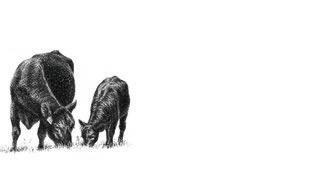
specializing in livestock insurance for over 45 years
One thing Third emphasized was the importance of branding cattle as a form of identification, something that is more common in Saskatchewan than in Manitoba.
“When a producer calls and says they are missing 10 calves, and the cows are branded but the calves aren’t, it makes it pretty tough, so that’s one of the big things we push is the importance of branding to make LSS’ job and my job easier,” he says. “It happens quite a bit that cattle show up with no tags and it’s hard to prove where they came from.”
Following questions from producers at the meeting, Pollock said they see a much higher percentage of unbranded cattle related to fraud cases than outright theft in the province.
“When it comes to paper cattle there is a lot of unbranded animals in that scenario; often feeder cattle that may or nor carry the fi nance brand and things like that,” he says. “We have a higher percentage of producers that brand their breeding herd, and we see a higher incident of not so much theft , more of harbouring. So, for example, when a cull cow gets sold, we fi nd the neighbour’s brand on it and then we go back through the records. We have seen quite a few of those come to successful restitution for the producer who originally lost that cow, where they have been compensated for the calves the other producer has raised off that cow.”
While it’s not likely Manitoba producers are going to adopt a branding system like Saskatchewan’s, Pollock emphasized the value of a robust ownership traceability system.
Livestock Services of Saskatchewan inspects an average of 1.7 million head of cattle a year, which generates about $4.5 million in revenue from the current $2.75 per head fee it charges for inspections. It also works with the Canadian Food Identification Agency on disease trace-ins and trace-outs, handles agent and dealer licensing in the province, administers the livestock brand registration, reports statistics and provides other valuable data back to the industry.
“ e biggest thing we add to the industry is assurance for investors and nancers to be able to invest into this industry with an awareness that there is a team of inspectors out there looking out for their best interests every time there is a commercial transaction in the province,” said LSS CEO, Jason Pollock at the Manitoba Beef Producers AGM in February.
“The more data the better,” he said. “As an industry, it’s critical we look at advancements in technology to replace that bona fide ownership recognition piece that can be translated into access to commerce.”
Eight resolutions were debated at Manitoba Beef Producers’ 45th Annual General Meeting held February 8, 2024 at the Victoria Inn in Brandon.
Four of these resolutions originated from MBP’s fall 2023 district meetings, one was brought forward by the MBP board of directors from their November 9, 2023 board meeting, and four late resolutions were debated.
MBP thanks all delegates who participated in the debate, as well as parliamentarian Art Jonasson for chairing the session. The following is the list of the debated resolutions categorized by theme, their point of origin, and the outcome of each vote.
1: Whereas some Manitoba cattle herds are being subjected to testing for bovine tuberculosis as a result of a Canadian Food Inspection Agency (CFIA) trace-out related to the discovery of bovine TB in a herd in Saskatchewan; and
Whereas affected producers incur expenses to muster their animals for bovine TB testing and are not reimbursed by government for these costs; and
Whereas producers going through the testing process may also face unexpected costs, such as having to feed cattle for an extended period of time while awaiting bovine TB test results.
Be it resolved to recommend that Manitoba Beef Producers lobby governments to provide a per head mustering fee to help offset the costs being incurred by Manitoba producers required to muster animals for bovine TB; and,
Be it further resolved to recommend that MBP lobby governments to provide feed assistance for Manitoba beef producers going through the bovine TB testing process.
Origin: District 14 Outcome: Carried
Note: The following identical resolution was debated and carried at both the District 10 and District 14 meetings.
2: Whereas the use of risk mitigation practices, such as those tested during the Livestock Predation Prevention Pilot Project funded by the Manitoba government, Manitoba Beef Producers and the Manitoba Sheep Association, can be valuable tools in helping to reduce the potential for negative interactions between livestock and problem predators; and,
Whereas the conditions of the Wildlife Damage Compensation for Livestock Predation Program state that Manitoba producers are “expected to use the prevention programs that are available and monitor their livestock to ensure their safety”, and
Whereas the targeted removal of problem predators by personnel such as trappers may at times be required to help protect the safety of livestock; and
Whereas such removal may be done through mechanisms such as the Problem Predator Removal Program which producers can access when they have an eligible claim through the compensation program.
Be it resolved to recommend that Manitoba Beef Producers advocate with governments to provide continued cost-shared financial assistance to producers to implement risk mitigation practices aimed at reducing the potential for negative interactions between livestock and problem predators; and
Be it further resolved to recommend that Manitoba Beef Producers continue to seek improvements to the Problem Predator Removal Program to help ensure that it has the needed resources to respond in a timely and responsive manner in cases where targeted removal of problem predators is required.
Origin: Districts 10 and 14 Outcome: Carried
3: Whereas through the Hunter-Killed or Injured Livestock Regulation under Manitoba’s Wildlife Act, livestock producers may be eligible for compensation for livestock killed or injured by another person during an open big game season; and
Whereas this ability to potentially access compensation does not exist for livestock killed or injured by another person outside of the big game hunting season, which can create financial hardship for producers.
Be it resolved to recommend that Manitoba Beef Producers advocate with the Province of Manitoba to provide compensation for livestock killed or injured by another person outside an open big game season.
Origin: District 8 Outcome: Carried
MBP Board 1: Whereas there can be several types of adverse events involving livestock in Manitoba, including theft, fraud, animals getting lost, or animals being endangered, injured or killed by accidental or deliberate human activities, and it is sometimes difficult to access police or other resources to investigate and resolve situations like these; and
Whereas with changing federal government traceability and movement reporting requirements to help with disease investigations and other regulatory matters there is a need to have an effective, cost-effective traceability system that does not place undue burden on all members of the beef value chain, including primary producers; and
Whereas having a requirement for mandatory livestock inspection has been debated several times in Manitoba, with beef producers having a split opinion on it; and
Whereas it may be possible to potentially offer expanded livestock inspection services in Manitoba via a third party for producers who wish to voluntarily pay for it; and
Whereas other provinces have benefited from having dedicated RCMP officers who can assist with investigating livestock-related crime.
Be it resolved to recommend that Manitoba Beef Producers continue to work with industry partners on the potential development of a traceability app for cattle operations to help with needed information sharing, such as transfer of care records, manifests, movement reporting, etc.; and
Be it resolved to recommend that Manitoba Beef Producers work with the new provincial government about the potential to create a Livestock Investigations Unit or another mechanism aimed at reducing local livestock-related crime.
Origin: MBP Board of Directors Outcome: Carried
CATEGORY: LATE RESOLUTIONS
L1: Whereas it has been estimated that only 1-in-8 or 1-in-10 losses related to livestock predation are eligible for compensation under the Wildlife Damage Compensation for Livestock Predation Program due to predators consuming the entire carcass or dragging it away to an unknown location; and
Whereas there could be value from a policy and program perspective in having a better understanding of both confirmed and suspected livestock losses related to predation in Manitoba.
Be it resolved to recommend that Manitoba Beef Producers request that Manitoba Agricultural Services Corporation consider tracking suspected predation-related livestock losses, and that this information be shared with government departments and agencies to help inform the understanding of the scope of livestock predation issues, as well as the associated program and policy discussions and decision-making in this area.
Origin: District 13 Outcome: Carried
L2: Whereas it is important that federal and provincial parks and wildlife management areas (WMAs) are managed in ways that support healthy landscape level biodiversity and ecosystem functions needed by both prey and predator species to thrive and to stay within those environments; and
Whereas due to habitat deterioration within parks and WMAs, some elk and deer have now found preferred grazing and habitat outside these lands on private and agricultural Crown lands managed by livestock producers, leading to concerns about their overpopulation in some parts of Manitoba; and
Whereas predators will pursue wildlife which previously lived in parks and WMAs onto agricultural lands, and problem predators may in turn also kill or injure livestock;
Whereas the movement of species from parks and WMAs onto agricultural lands has contributed to other challenges, such as damage to crops and feed, the potential for the transmission of diseases such as bovine tuberculosis to domestic species and other wildlife, and public safety concerns, such as the increased risk of wildlife-vehicle collisions.
Be it resolved to recommend that Manitoba Beef Producers continue advocating with the federal and provincial governments for improved ecosystem management in the parks and wildlife management areas with the aim of providing the type of habitat needed to support elk and deer populations in those areas and the species that prey upon them so that they are not so reliant on using agricultural lands for their habitat; and,
Be it further resolved that Manitoba Beef Producers ask Manitoba Economic Development, Investment, Trade and Natural Resources to conduct a thorough analysis of elk and deer populations in agro-Manitoba to determine if there are areas of over-population and if additional management strategies are needed, such as increased hunting opportunities.
Origin: District 13 Outcome: Carried
L3: Whereas livestock producers may at times need to seek compensation for livestock losses or injuries, or for damage to their crops via the Wildlife Damage Compensation program administered by Manitoba Agricultural Services Corporation (MASC); and
Whereas the Wildlife Damage Compensation Regulation under The Wildlife Act provides greater detail about accessing compensation for predation-related losses, for wildlife-caused crop damage, the ability to appeal claims decisions, etc.; and
Whereas concerns have arisen from livestock producers about inconsistencies in the approach to claims adjusting under the Wildlife Damage Compensation program and with respect to information sharing about initiatives such as the Problem Predator Removal Program; and
Whereas it is therefore important that MASC claims adjustors and livestock producers have an equal understanding of the policies, procedures and expectations around how the livestock predation and wildlife damage to crops compensation programs work, including, but not limited to: claims adjusting processes, compensation calculations, treatment protocols for injured animals, appeals processes, and more.
Be it resolved to recommend that Manitoba Beef Producers request that Manitoba Agricultural Services Corporation develop a series of information resources (e.g. fact sheets, FAQs, webinars, workshops, etc.) about the livestock predation and crop damage components of the Wildlife Damage Compensation program, as well as the associated policies, in order to enhance producers’ awareness and understanding of the program and the risk mitigation tools available to them; and
Be it further resolved to recommend that Manitoba Beef Producers request that Manitoba Agricultural Services Corporation continue to endeavor to provide consistent training and expectations for claims adjustors or other staff working on the Wildlife Damage Compensation Program, be that for predation-related losses or wildlife damage to crops.
Origin: District 13 Outcome: Carried
L4: Whereas each individual has a $1,000,000 lifetime capital gains exemption (LFGE) to use to offset capital gains that will occur when qualified farming or fishing property is sold or deemed sold; and
Whereas the level of the LFGE has not kept up with inflation, the price of farm land and the size of farm needed to make a living.
Be it resolved to recommend that Manitoba Beef Producers lobby government to consider increasing the amount of the Lifetime Capital Gain Exemption to ensure that it remains relevant compared to the value of farm assets.
Origin: District 7 Outcome: Carried
If you take a look at RealAgriculture founder Shaun Haney’s LinkedIn profi le it says “always thinking about agriculture.” Following his keynote speech at the Manitoba Beef Producers AGM in Brandon on February 8th, there were a lot more people in the room thinking about agriculture too, and more specifically the many political, social and economic factors affecting the beef industry.
Haney, a well-known ag media personality, who hosts RealAgriculture’s daily radio show and podcasts, also helms RealAgristudies, a market insights partnership with Justin Funk of Agri Studies Inc. of Guelph, Ontario.
He shared a number of statistics from RealAgristudies’ Farmer Sentiment Index that collects opinions, thoughts and perspectives from Canadian farmers. The overarching message from January’s index results was that Canadian producers are a lot more pessimistic than their American counterparts.
Producers across Canada (in all sectors) viewed 2024 as potentially more risky than last year, and a big factor to that view (in many areas) is uncertainty over whether dry conditions will persist again into the growing season, Haney said. Though not exclusively a Canadian concern (the U.S. has had drought too), it’s something that plays into so many different areas.
“We haven’t had a lot of profitability over the last while, there’s still a huge overhang in Canada when it comes to BSE; we lost a lot of producers and are having trouble getting those people back into our industry, and Mother Nature is quite frankly not very cooperative,” Haney said. “We need grass to expand the herd.”
belief that they anticipate more subsidies coming their way when a new President is in power.
The United States Department of Agriculture just released a report showing the lowest amount paid to American producers in subsidies in 10 years.
“Relatively speaking they are going down. They’re also having a hard time passing a farm bill, but subsidies, I think, play a role,” Haney said. “The American farmer knows deep down, because they’ve already been through it once, that Trump bucks will be back. 23B dollars went to farmers in 2018 and 2019 entirely in ad hoc programs through the Commodity Credit Corporation. No matter if you are left or you’re right in the United States, you will make up any excuse to funnel money to the American farmer. That may be a part of the difference between our levels of optimism, I’m not sure.”
Although Haney isn’t predicting the outcome of the U. S. election, (who can at this point) he emphasized that no matter who wins it’s going to significantly impact Canadian agriculture. As an example, Trump has already intimated that he wants to impose a 10 per cent tariff on all goods coming into the U.S. and that includes Canadian beef.
Trade agreements looming large
The looming (and chaotic) U.S. election is going to have a huge effect on Canadian producers, especially with a re-negotiation of CUSMA (the Canada-United States-Mexico trade agreement) slated for 2026, and a general trend towards more protectionism south of the border.
“The American farmer is much more optimistic than the Canadian farmer,” Haney said, adding it is his belief that they anticipate more subsidies coming their way when a new President is in power.
With Canadian cattle numbers still low, but continuing strong demand for beef both domestically and abroad, livestock producers are more confident in marketing their livestock than a year ago compared to grain farmers confidence about marketing their crops. Many producers believe that the livestock markets are going up, but that isn’t translating into positivity when it comes to current and future farm fi nancial performance.
Haney’s data consistently shows that farmers and ranchers think more positively about their current farm fi nancial performance than about what the future looks like, and their optimism about the Canadian economy in general has declined, with few feeling positive about the next 12 months. And when asked about the future of the Canadian agriculture industry over the next five years, the majority of 550 Canadian farmers and ranchers answered negatively.
“In order for me to feel bullish about my profitability in the beef industry, especially in the cow/calf sector, I need confidence that we’re going to see a sustained period of moisture here,” he said. “What is interesting is that Canadian farmers, even though they’re more pessimistic about their fi nancial performance, are more willing [than U.S. farmers] to make capital investments right now.”
The exception to the trend, Haney’s data shows is when it comes to farms that have more than five million in revenue and have a younger person at the helm.
“Operations over 5M revenue are different than the rest of the pool,” Haney said. “They are more optimistic. They’re more focused on strategy, fi nances, learning and development as a whole. They are more excited about implementing technology and they’re more interested in making capital investments. If you are under 35 and over 5M in revenue, the gap gets even bigger from what we have seen.”
Effects of the U.S. election
“The American farmer is much more optimistic than the Canadian farmer,” Haney said, adding it is his
“America is becoming much more protectionist on both sides of the aisle,” Haney said. “It is [an attitude of] ‘we need to take care of ourselves fi rst, protect US jobs’, and I think it’s growing. I am concerned about the reception that Canada is going to get with the Team Canada approach on the free trade re-negotiation. The mood is shift ing, I think we are going to get less of a receptive response. I’m hearing that from people in Washington, DC, as well.”
Add to that the other geopolitical events that can affect trade and trade agreements are going to be more and more important, Haney said.
“When I talk to grain and crop growing audiences, the shipping lanes become more of a consideration when we talk about some of the geopolitical impacts than it does for beef or some of the other proteins, but where I get concerned from a geopolitical standpoint is when it comes to global economy,” Haney said. “We’ve got a lot of supply of beef. We need these prices to hold where they are, and we need the consumer to continue to chew through that beef. That needs to happen domestically in Canada and the US, but also the export market, and when we talk about China or other Asian nations, the CPTPP (Comprehensive and Progressive Agreement for Trans-Pacific Partnership) is a very important agreement for us when it comes to pork and beef.”
He also believes producers will be hearing a lot more about environmental policies such as carbon border adjustments.
“A carbon border adjustment is essentially a way to level the playing field between countries that have a price on carbon, and are concerned about the environment, and countries that are not as caring about reducing carbon emissions as we are,” he said. “I’m really worried about countries like Canada, the US and other countries using environmental policies as a weapon against each other. We can’t even figure out how to measure some of this, [so] when we know our math isn’t solid and use [those numbers] against each other, that is a dangerous place when it comes to Canada, where we rely so much on trade.”
A new Canadian government?
Turning to Canadian politics, polling data suggests a change of government by fall 2025, as Conservatives continue to lead in polling data, with strong support
across western Canada and from farmers, only two per cent of whom, when surveyed last summer, said they felt the federal government had done a good job of supporting agriculture.
“We vote people out, not in,” Haney said, adding the Canadian government is going to have major challenges ahead.
TUESDAY, MARCH 26TH, 2024
1:00PM DST • Beautiful Plains Ag Complex, Neepawa, MB
Offering 12 TwoYear Old & 32 Yearling
Charolais Bulls • White, Tan, Red Something for everyone
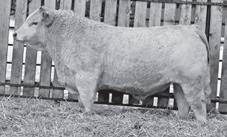
Quality offering from 6 Manitoba Breeders
Sale Manager: 306-584-7937
Helge By 306-536-4261
charolaisbanner@gmail.com
By Livestock
View catalogue & videos online at www.bylivestock.com
22nd Annual Bull Sale
Tuesday, March 19, 2024 – 1:30 pm JTM Livestock, Minitonas, MB Same day • Same location
50 CHAROLAIS Two-Year-Old & Yearling Bulls
30 RED & BLACK ANGUS Two-Year-Old & Yearling Bulls
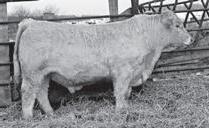
Sound, semen tested and delivery available Dollars for Quality - As Good of Buying as You Can Do Sale broadcast live at DLMS.ca
For more information contact:
DIAMOND W CHAROLAIS
Orland Walker • Box 235, Hudson Bay, SK S0E 0Y0 T 306-865-3953 C 306-865-6539
diamondw@sasktel.net
Sale Manager: BY LIVESTOCK
Helge By 306-536-4261
charolaisbanner@gmail.com
Catalogue & Videos online at www.bylivestock.com
Livestock predation has been a recurring and important topic on the agenda of the Manitoba Beef Producers district and annual meetings over the years, and for good reason. Livestock predation claims under the Wildlife Damage Compensation Program were up 34 per cent last year over the previous year, and compensation amounts were up by 52 per cent.
The highly-anticipated results from the three-year pilot Livestock Predation Prevention Project, that concluded in 2023, are now available to producers, and Ray Bittner, who led the project, was on hand at the MBP AGM in Brandon on February 9 to share the highlights.
The project team documented all aspects of the results, observations, costs, pros and cons of a number of different Risk Mitigation Practices (RMPs). As a result, producers have a number of new resources that they can access at the MBP website at https://mbbeef.ca/ producers/. These include:
• Outlines of which mitigation measures work best for various seasons, and the predator and livestock behaviour for a particular season;
• A “How to” guide for mitigating livestock predator attacks that profi les the various construction and purchasing details for each of the RMPs;
• RMP fact sheets in pdf format that detail the producer feedback on success/failure, cost, photos, and testimonials;
• RMP videos taken with Manitoba Agriculture staff who asked producers questions about the success and failure of the RMPs. These interviews resulted in five to seven-minute videos that are packed with short, simple questions and detailed descriptions from real producers; and
• A detailed Final Presentation YouTube video that will be linked from the MBP website to automatically load and presents essentially the same information that Bittner shared at the MBP AGM.
The pilot project, funded by the Province of Manitoba, Manitoba Beef Producers and the Manitoba Sheep Association, involved 48 Manitoba beef and sheep producers and 114 RMP projects that included game cameras, predator resistant pens, deadstock composting pens, cow bells, solar foxlights, different electric fencing
options, and various GPS tracking collars and eartags, as well as a number of veterinary assessments.
One of the most successful RMPs seemed to be predator resistant livestock pens. The pens were made with wire hi-tensile electric fence wire close to the ground with square gates and solid thresholds of metal pipe of concrete.
Eighty per cent of the producers had all predators excluded from the pen and 90 per cent believed it saved livestock. While half had to disconnect the bottom wire at some point, most would rebuild if destroyed and would recommend the pens to others. They do require some site preparation and maintenance but overall were seen as successful.
Producers also rated GPS trackers for livestock fairly highly. They tried out various GPS collars or tags which report live locations and movements of livestock (with an average cost of around $400 per head). All producers who tried these systems were able to log in and track cattle, sheep or dogs, and 83 per cent checked GPS location before going to do a pasture check. Seventy-eight per cent would repurchase the equipment if lost, and their feedback recommends having trackers on about five per cent of the herd. Producers appreciate the information that they gain, but reliability and year round operation have proven elusive, but with hardware improvements there is a bright future for this technology.
There were some issues reported that included cracked plastic cases, problems with solar panel charging and battery life, but producers saw best opportunities with the system for livestock, dogs, donkeys, pasture management and virtual fencing.
Game cameras
The project evaluated both LTE and memory card type cameras with the goal of helping producers understand who the predator present is and its patterns. Fift y-eight per cent of the producers believed that the LTE camera was worth it and 42 per cent felt the cameras helped with removal of predators. Eighty-three per cent would recommend game cameras to others.
Turbo fladry
Fladry is a temporary poly/steel wire with flags sewn on that hang down and is combined with an electric fence energizer and swinging drive-through gates covering about five acres. The cost is about $1 a foot to install. It is most effective for wolves and coyotes, but less so for bears or cats.
Sixty per cent of producers reported all predators stayed out, half of them believed that the system saved livestock and 80 per cent would purchase it again. Some negative comments were that sheep eat the streamers and the wire was not tall enough for cattle. Its use is most effective for 45 to 90 days.
Cow bells
Sixty-seven per cent of producers agreed that cow bells helped them to fi nd cattle and believed they save livestock, but 50 per cent believed that predator behaviour changed, and 17 per cent felt that they attract predators. The cost of the bells is around $30 to $40 and the recommended application rate is five per cent.
Deadstock composting pens
These were comprised of around 60 feet x 60 feet chain link fence, buried six inches into the ground with rectangular gates with a small gap and solid threshold, using straw, bullrushes or sawdust for the carbon source, and covered.
Seventy per cent of producers reported no invasion rate and half had less predation and believed it helped save livestock, and most reported minimal or no odour. Most (80 per cent) would rebuild, but there were a few challenges with bears, who are notorious for scaling fences.
Solar foxlights
These solar powered night lightshow machines are intended to scare off foxes, coyotes and wolves and for term use during risk seasons such as calving, lambing and weaning. Four lights were installed per paddock and 83 per cent of producers believed they reduced predation and a similar number would replace the lights if lost. About one light per acre is recommended. The lights only work when it’s dark, so as nights get shorter, they can be less effective.
ElectroNet Fencing
ElectroNet is an electric fence with portable poly netting that needs powerful fencers (small solar fencers are generally too small). All the producers agreed that it reduced predation and saves livestock, and most would replace it. Eighty per cent also felt that livestock guard dogs were necessary along with the fencing.
The cons were that cattle can reach over and pull it down and horned sheep can get caught in it.
Livestock guardian dogs and donkeys
Most producers who use guardian animals have seen success, and dogs are ideal for sheep, while donkeys are better for cattle, but 100 per cent success isn’t guaranteed. GPS collars can help but results depend on the individual dog or donkey (some are useless).






Producers can fi nd the answers to most of their questions about livestock predation risk management practices at the MBP website under Livestock Predation Prevention Project, but they can also contact Wray Whitmore, Predation Specialist with Manitoba Agriculture.



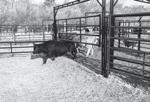

Since it was fi rst awarded in 1996, Manitoba Beef Producers’ local awarding of The Environmental Stewardship Award (TESA) has gone to a cattle producer in the province. Th is year, there was a break with tradition as the TESA was presented to the Association of Manitoba Community Pastures (AMCP) at MBP’s 45th AGM on February 8 in Brandon.
TESA recognizes producers for their conservation practices, and who set a positive example for other producers and the public.
In nominating AMCP for the award, beef producer Alvin Stewart, who is a Gardenton-Pansy Community
Pastures patron said “AMCP clearly takes its commitment to environmental stewardship seriously and has attracted over $1.5 million in grant funded projects over the past few years. Th is funding helps all producers using the community pastures as well as the long-term sustainability and protection of pasture lands.”
Celebrating its 10-year anniversary
The AMCP, which is celebrating its 10-year anniversary in 2024, is committed to enhancing and supporting the livestock industry by providing high quality grazing from May to October every year, balanced with sustainable rangeland stewardship. All AMCP community pastures have certified Environmental Farm Plans in place.
With a mandate to sustainably manage productive and biodiverse rangelands enhanced by livestock production, AMCP’s success over the last decade has been driven by:
• Support from over 350 livestock producers (pasture patrons), who bring over 40,000 head of livestock to graze the Community Pastures every year.
• More than 40 onsite pasture managers and riders ensure animal care, cattle rotations and range management.
• Democratic governance by livestock producers with fi rsthand knowledge of the industry.
New partnerships with Manitoba conservation organizations to strengthen the grazing management systems of the community pastures and deliver new environmental projects on private or leased pasture lands in Manitoba and Saskatchewan.
The community pasture program is available to all producers and prioritizes access for new and young producers.

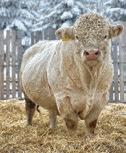



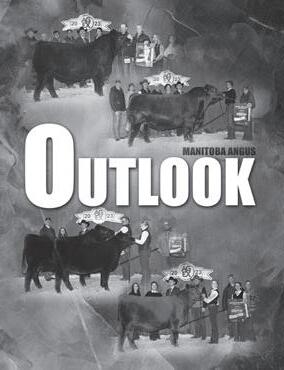

“Thanks to strong rangeland management practices, AMCP community pastures sustain numerous environmental benefits as well as contribute to the fabric of rural communities,” said Barry Ross, AMCP General Manager, in the nomination application. “The community pastures are well used for scientific research, birding and other wildlife surveys, recreation and hunting.”
In May 2018, the Province of Manitoba also awarded AMCP the 2017 Manitoba Excellence in Sustainability Award for Water and Natural Areas Stewardship in recognition of its range management practices, the environmental benefits of the community pasture program, and its support for Manitoba’s cattle industry and rural communities.
Much achieved in 10 years
AMCP community pastures comprise of more than 350,000 acres of intact prairie lands, where it uses management tools such as managed livestock grazing systems (rotational grazing supported by sustainable stocking rates and improved livestock distribution) and prescribed burns to preserve and enhance the ecosystem services of these lands.
The Association has secured grant funding over the past three years for major projects in support of its grazing management objectives such as brush management controls, the installation of 20 miles of new fencing to improve rotational grazing, improvement of 70 water sources and the building of 40 livestock crossings. It also installed 37 new solar watering systems for pasture patrons in 2023 in partnership with the Nature Conservancy of Canada and funding provided through the Weston Family Prairie Grasslands Stewardship Investment Program.
As part of Conservation Trust project works, AMCP also partners with Manitoba Fisheries & Wildlife Branch to do annual bird surveys that demonstrate the importance of Community Pastures as wildlife habitats that supports many avian species-at-risk.
As it celebrates a decade of supporting the beef industry in Manitoba while providing important ecosystem services including wildlife habitat, carbon sequestration, and water retention and fi ltration, the AMCP still has many environmental goals for the future. They include continuing to recruit and retain staff dedicated to livestock care and the needs of the industry and to provide grazing services for producers across the province, with a view to long-term stocking rate increases, so producers can increase herd sizes with the reliability they need. AMCP will continue to invest in sustainable best management practices, such as fencing and watering and new projects that foster a healthy livestock industry.
AMCP will compete with the other provincial TESA winners for the National TESA award that will be presented by the Canadian Cattle Association at the Canadian Beef Industry Conference in Saskatoon this August.


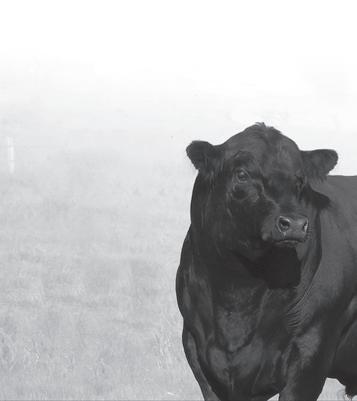



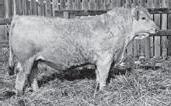

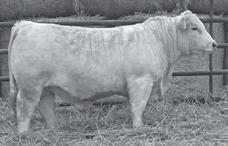













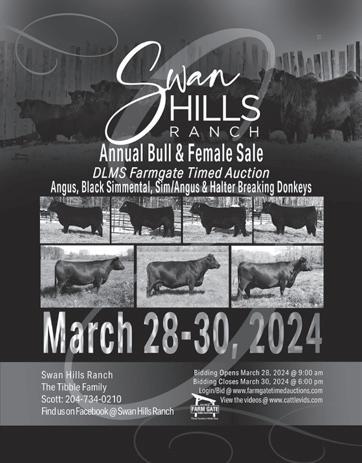
The Manitoba Crop Variety Evaluation Team (MCVET) annual forage trials were run at five sites in 2023 across the province including Melita, Roblin, Arborg, Carberry and Carman. The objective of the program is to test different varieties of annual crops for forage yield and quality across Manitoba. Six different annual crops were compared, including a cereal/pea mixture.
Seed source for millet & sorghum Imperial Seed
Seed source for triticale Zeghers Seed
The 2023 MCVET annual forage trial results, including yield and feed quality information can be found in the Seed Manitoba 2024 Variety Selection and Growers Source Guide and here in Cattle Country. Overall across all five sites on average, sorghum was the highest yielding at 7.8 tonne/acre of dry matter, followed by barley at 5.7, the pea/cereal mix at 5.3, oats at 4.9, millet at 4.3 and then triticale at 4.1. Barley had the highest overall relative feed value and energy, but was fourth for protein. The pea/cereal mix had the highest protein and was third for both relative feed value and energy.
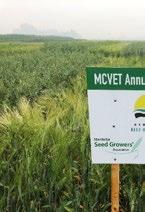
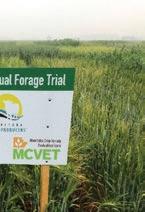
1 Dry matter yields measured under a one-cut system.
2 Due to lack of availability, common seed was used.
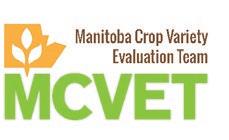
1 Quality tests were done by wet chemistry and were a composite of the three plots/site.
2 Relative feed value (RFV)
3 Crude protein (CP)
Yield Comparisons
The 2023 annual forage trial combined all crops and varieties in one trial with three replicates per site. Quality is highly dependent on plant maturity at harvest. Barley was harvested in mid dough stage; oats & triticale at milk- early dough stage; peas at early pod wrinkle; millet and sorghum at heading. 2023









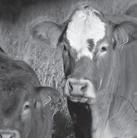






Cattle prices in Manitoba and across western Canada continue to rebound after finishing the fourth quarter of 2023 in a bit of slump. Lighter weight longterm cattle suitable to go to grass have seen the biggest increases. I was at the sale in Killarney on February 12 and watched a small group of calves weighing 403 pounds bring over $5.05 per pound. That was the first time I ever witnessed calves at that weight bring that kind of money.
As predicted, cattle numbers are short across the country. As of the week ending on February 9, Alberta had sold 28% fewer calves in 2024 than in the prior year. Saskatchewan was down 40%, and here in Manitoba we are down 18%. Many of the auctions in Manitoba are reducing their feeder sales to once every two weeks to consolidate the consignments and get a large volume to attract the buyers. So many producers sold everything last fall and did not keep any of the lighter cattle back for sale in the spring. There was less local buying last fall for resale in the new year.
Prices for the cattle have really improved.
The 400-to-500-pound steers are up an average of $1.28 per pound over last year to date. The 500 to 600 pounders are up 98 cents per pound. The 600 to 700 pounders have increased 79 cents, 700-to-800-pound steers are 68 cents higher, and 800 to 900 steers are 58 cents per pound higher in early February of 2024.

The Bottom Line
at $3,000 look like a better buy with a quicker return than heifers.
Cull cow prices continue to improve, showing a 10 per cent price increase since the start of the year. Cull cow numbers coming to the markets continue to hold steady in Manitoba. The decline of the Manitoba beef cowherd continues as producers continue to cull hard and reduce their herds. Good quality bred stock is in short supply in Manitoba this spring. Prices at the few bred cow sales are no higher than in the fall, and some sales were $200 to $300 per head less than the peak sales in November and December of 2023.
user friendly. Provincial Agriculture Minister Ron Kostyshyn acknowledged the current issues on that topic and seemed approachable to discuss the program with MBP. Minister Kostyshyn was a cow-calf producer and has experienced the challenges of being a Manitoba cattle producer. I think that he will be a good ally of the livestock industry if he gets the support of the party.
As predicted, cattle numbers are short across the country. As of the week ending on February 9, Alberta had sold 28% fewer calves in 2024 than in the prior year.
Heifer prices have also increased by about the same margins as the steers, with the price spreads between the steers and heifers remaining close to last year. I would expect that the spread might tighten up going forward.
The shortage of steers on offer may force some feeders to purchase heifers. Lower corn and barley prices also make feeding heifers more attractive moving forward. There may be some demand for breeding heifers. With good replacement type heifers selling between $2,200 and $2,400 per head, producers are getting a dose of sticker shock when they go to the sale. Good bred cows
It was too bad that Mother Nature had plans to disrupt the Manitoba Beef Producers 45th Annual General Meeting in Brandon. Poor driving conditions certainly reduced the attendance at this year’s event. The meeting had a variety of knowledgeable speakers on a number of timely topics. The prime rib supplied by True North Foods from Carman and prepared by the Victoria Inn was as good as you can get.
Here are some observations from the MBP meeting. There was a lot of discussion on predation compensation and making the claims process more
It was encouraging to see the resolution touching on livestock inspection and the creation of a livestock investigation unit passed at the meeting. I was surprised that there was not more discussion. This will give the MBP Board of Directors the opportunity to move forward and explore what options could work for Manitoba. Agriculture Minister Kostyshyn addressed the crowd twice during the meetings; each time he mentioned that cattle theft and fraud were a concern in Manitoba. There seemed to be a feeling that the current provincial government is more willing to investigate livestock inspection than the previous administration. There are many moving parts that must be explored and a number of cost benefit scenarios that must be worked out, along with some legislative amendments to be approved before anything serious develops. The other part of the puzzle will be getting a full-time RCMP officer in the province dedicated to livestock. Livestock inspection and an RCMP officer dedicated to livestock-related crimes go hand-in-hand and are a necessary combination to make the project successful and bring value to the producers for the projected cost. MBP’s board of directors and staff has work to do in the future working with industry partners and members to get the best program for Manitoba possible.
The Man/Sask Auctioneering championships will be held at Heartland Livestock Services in Virden on Saturday, March 23. Contact Brennin Jack at HLS Virden to consign cattle. Fifteen auctioneers from Manitoba and Saskatchewan are expected to compete. Until next time. Rick
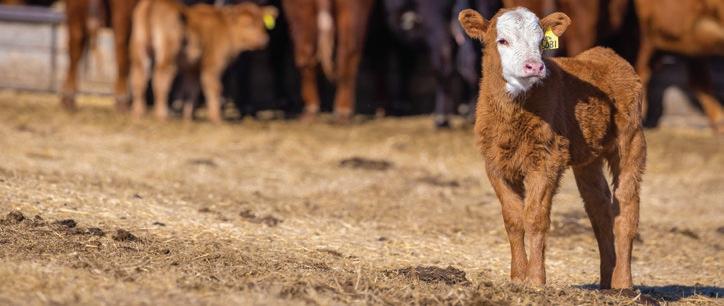
Livestock Price Insurance (LPI) is an insurance program that provides price risk management to beef producers. Calf prices are reaching historic highs. Now is the time to purchase your LPI policy and protect your operation from declines in the cattle market.
• Get forward price coverage for calves you plan to market between September and February 2025 with the LPI – Calf program.
• Coverage options are available to choose from every Tuesday, Wednesday, and Thursday from 3 p.m. - 12 a.m. (CT).
• The last day to purchase LPI – Calf policies is June 13, 2024.
Visit LPI.ca or contact your MASC Service Centre to purchase a policy.
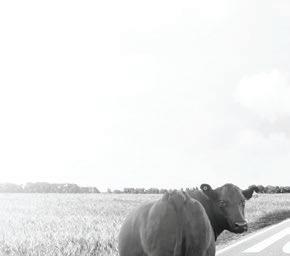




Looking back. Thinking forward. Driving innovation.

For over 50 years, Merck Animal Health’s commitment to vaccine research and development has helped pave the road to healthier Canadian cattle.
Our major contributions include:
Nasalgen® IP
1969 – First intranasal vaccine for cattle sold in the US
Vision®
1995 – First low reactive, subcutaneous (SQ) clostridial vaccine sold in the US, administered in a 2 mL dose
Bovilis® Guardian®


2005 – First and only scours vaccine labeled for SQ administration

Vista®
2006 – First bovine respiratory disease (BRD) vaccine to offer bovine viral diarrhea (BVD) Type 2 protection
Once PMH® IN

2014 – First intranasal vaccine offering dual bacterial pneumonia protection
Bovilis® Nasalgen® 3-PMH
2021 – First and only 5-way intranasal vaccine that helps protect against both viral and bacterial BRD pathogens with a single dose
Discover the comprehensive Merck Animal Health portfolio of cattle vaccines – that now live under the BOVILIS® name – and our proud tradition of firsts.

Calving season is upon us with some getting close to being done, others part way through and still more to start. In my area, calving has gone well ‒ not too many problems, though the warm weather has created some challenges. In this article, I thought I would share some calving tips that I have given clients over my years as a vet during calving season.
Firstly… I sure wish Clover (a life-sized Hereford dystocia simulator) was around when I was in vet school! I learned how to cut up calves (fetotomy) as a treatment for getting deformed calves out of cows to avoid a caesarean using a large wooden box with a perfectly round roomy hole at the end. It was so easy in the lab! My learning about malpresentations was little schematically diagrams in therio class! The Beef Cattle Research Council is an excellent resource for all things beef cowcalf including calving tips. The Calving Decision Chart is an excellent flowchart ‒ print it off, laminate it and use it as a quick resource and for training when you are mentoring the next generation or new employees.
Know the anatomy of a calf. Know how to tell front legs apart from back legs. Feet and knees on forelegs bend the same direction. Feet and hocks bend in opposite directions. When you are tired, it is easy to get confused. Step back and take a look at the cow’s anatomy if you are struggling and need to orient yourself. Never assume that if the toes showing at the back end are pointed down that they are from hind feet. I have seen several calves presenting upside down with head back. Pulling on the visible legs and wedging the neck in the pelvic canal is a death sentence for these calves. Always take the time to reach in, get oriented and know what you are dealing with.
No one likes a breech calf ‒ just a tail present. You know what you need to do but getting those hind legs up is often physically exhausting. In many cases, breech calves have gone unnoticed as cows may only
show subtle signs of calving. Th is means more dryness and possibly a dead or worse, rotting, calf. Own a jug of lubricant. Lubrication is your friend and makes it much easier to manipulate malpositioned calves and minimizes frictional damage to the cow. And own a bottle of epinephrine ‒ it is useful for more than just as a treatment of anaphylaxis. It also causes the uterine muscle to relax which then gives you more room to do your manipulations.
If you can reach the hock joint, grab the tendon or the leg bone below the hock and pull it up so that you can reach the foot. Having long skinny arms and big hands is an advantage for me because I can get both arms in to push the rump forward while I pull up the hock. I realize that is not the case for most guys, so utilize a second set of arms lift ing from outside the cow. Loop a chain (needs to be 60”) around the upper hindleg above the hock then slide that loop down to position it below the hock. Then have an assistant pull up on the chain while you keep your hand on the point of the hock and guide it up past the uterine folds.
Once you have the hock up, you can then slide the chain down to position below the dewclaws and have your assistant pull up again while you cup the foot and pushed the hock forward to bring the leg up. You must always keep a hand on the part of the leg you are repositioning to ensure that the uterine wall is not perforated.
Once both legs are up, lubricate the birth canal and start to pull, ensuring that the stifles don’t catch on the pelvis and that the hips are moving into the birth canal with ease. Once the hips are in, start jacking fast as the head is the last to come out and breathing is being stimulated as the umbilical cord gets pinched. Be sure to pull straight out until the ribcage is visible and then angle downwards to avoid catching the ribs on the pelvic floor. Work with these calves after birth ‒ they often aspirate and are less viable due to prolonged labour. Ensure they get colostrum and give any calf that you have to pull a dose of Metacam as a “pick-me-up”. Their fi rst day has


not been off to a good start!
A jumbled mess of legs and a head? Th ink multiples. Remember your anatomy and start sorting. When I am working on one of these, I will fi rst see if I can feel any heads or tails. That way I know what position the calf most likely to be pulled fi rst is in. If I have a head, I will then move my hand down along the neck to the chest before moving it to the side to feel the leg attached to that head and follow it out to the foot. I put a chain or strap on that leg and start again to fi nd the second leg. Once I have the head and its matching front legs, I will push other legs out of the way and start to pull on the calf. Do the same if you have a tail ‒ look for its matching pair of hindlegs. Remember to double loop chains ‒ one loop above the fetlock (ankle) and the other below the fetlock ‒ to avoid a leg fracture if a forceful pull. Remember your lube and feel in as you start to pull to ensure that the head is entering the birth canal and that no other legs are trying to come as well. Sometimes it takes a few tries of pulling and releasing to get a calf repositioned.
How far can you get in? If you can only reach in up to your elbow, the cow is not likely calving especially if you then feel a small donut-like ring with thick mucous in the middle. This is a closed cervix and means that the cow has not opened up. If you can fit your hand into that ring, it has started to open and I would give the cow more time. Progress should be made each hour and, if not, a cesarean may be needed. If that opening feels asymmetrical or pulled off to the side and you must immediately direct your arm downwards to feel the calf once you get your hand through, that is a sign of a uterine torsion. The cow that is “not opened up” but acting like she is calving needs veterinary attention and advice… this is not normal, though the cause may be varied.
Never be afraid to call your vet for advice ‒ the only bad question is an unasked one. Dealing with a calving difficulty should not feel daunting ‒ ask for help early and have a successful calving season.

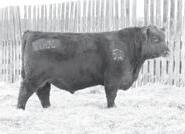
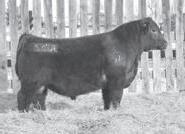
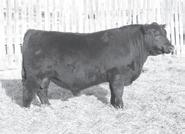




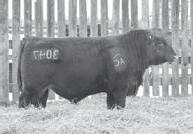






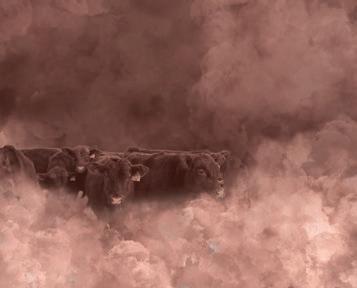


President:
Secretary: Sandra Brigden 403-638-7741
MB
Mar. 5th Bonchuk Farms Annual Bull Sale, Virden, MB
Mar. 6th Mar Mac Farms & Guests Simmental, Red & Black Angus Bull Sale, Brandon, MB
Mar. 8th Rainbow River Simmentals 8th Annual Bull & Female Sale, FarmGateAuctions.ca
Mar. 9th 83 South Simmental Bull Sale, FarmGateAuctions.ca
Mar. 9th Rancher’s Select 5th Annual Simmental Bull Sale, Neepawa, MB
Mar. 11th McIntosh Ranch Online Simmental Bull Sale, FarmGateAuctions.ca
Mar.
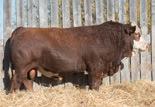
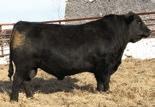



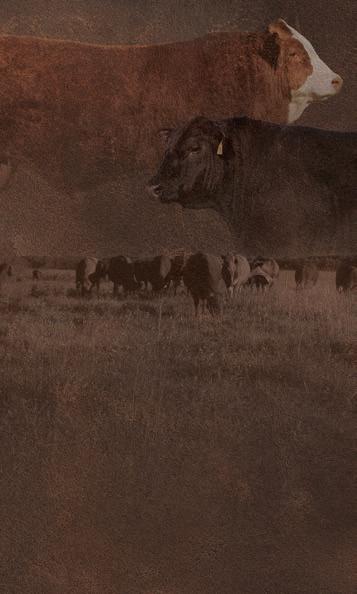
Integrating livestock onto cropland where possible is often noted as one of the key practices for building soil health but this can be challenging to adopt within annual cash crop rotations that are common across the major grain growing regions within Canada.
A new Agriculture & Agri-Food Canada AgriScience Program Cluster and Beef Cattle Research Council project co-lead lead by Animal Scientist Dr. Emma McGeough and Plant Scientists Drs. Yvonne Lawley (University of Manitoba) and Kim Schneider (University of Guelph), will be collaborating with a team of researchers to look at the barriers to crop-livestock integration and regionally adapted strategies to benefit both grain and cattle producers.
Producer survey
We know from industry that farmers and ranchers have significant concerns about the practicalities and the economic costs and benefits of integrated crop-livestock production. After years of increasing specialization throughout the entire sector from farm to fork—why exactly should producers consider a way of farming that seems to buck that trend?
Researchers throughout Canada seem to have a pretty good idea why—because it’s a great way to benefit the soil in which our food and feed grows. Small-plot experiments have shown promising results, but now it’s time to see if the idea has the potential to scale throughout the diverse agricultural regions of Canada.
As producers know well, demonstrating results through plot- or field-level experiments on research farms is a crucial first step, but experimental success is not a guarantee of success on the farm—especially in a landscape as broad as Canada’s. To that end, Dr. Tristan Skolrud (University of Saskatchewan) is launching a Canada-wide survey of commercial beef and crop producers to find out just how willing our producers are to consider integrated crop-livestock practices. Are ranchers interested but just don’t know how (or perhaps why) to get started? Are farmers interested in the soil health benefits from grazing but aren’t sure if the benefit is worth the hassle?
Before we get our survey out in the field, we’ll spend some time talking with producers to make sure we’re asking all of the right questions—if you’re reading this and want to take part, feel free to reach out!
Strategies to get started: annual forage grazing in the spring and fall shoulder seasons
Extended grazing strategies built around annual forage crops is an angle this new beef cluster project will be focusing on. The need to “get more from less” when it comes to available land for cattle grazing and feed production could be a motivating factor to enable new integration of beef cattle on annual crop land that benefits all sides. Quality matters as much as quantity and there also continues to be a need to address the high nutritional demands not only of backgrounder/replacement cattle in the fall but also of females in the spring/ early summer around calving.
Annual crops for fall grazing are routinely used for swath grazing, however, the cost of harvesting increases the cost of this feed. Also, the question of which crops to grow is driven by regional climatic and soil suitability, class of cattle and the intended season of grazing. The question of “what works, where?” will be asked by the team which also includes plant, animal and economic researchers from the University of Saskatchewan (Dr. Bart Lardner and Kathy Larson), University of Guelph (Dr. Katie Wood) and Agriculture and Agri-Food Canada (Drs. Jillian Bainard and Aklilu Alemu).
Crop species for grazing may consist, for example, of annual cool or warm season grasses, annual legumes, brassicas, and forbs but species selection is dependent on many factors. Common cool season species such as oats or fall rye can be grazed in the fall to extend the grazing season, winter cereals (e.g. fall rye, winter triticale) can also be planted in the fall for grazing the following spring. However, little data exists for spring/ fall grazing of standing annual forage crops, thus we must look at several management factors for adoption for Canadian cattle production.
These include identifying suitable annual and intercrop species, time of seeding and time of grazing. More information is also needed on suitable mixtures (both simple and complex) to grow in terms of forage yield and quality and how the grazing in the shoulder seasons impacts soil health and subsequent crop yields. Choosing species that offer complimentary benefits for plants, animals, soil and economics can increase the efficiency of resource use and lead to greater yields than single species monocultures.
On the field side, the first growing season of this project got underway in 2023 with the establishment of small plots across Canada from British Colombia to Ontario, with sites at Agassiz, Lacombe, Swift Current, Clavet, Carman and Guelph. For evaluation for fall grazing, annual forages were seeded in late spring/early summer and although significant drought conditions in Manitoba and Saskatchewan delayed seeding until early July, this did provide the opportunity to see how late seeding would affect yield and quality throughout the fall. Given the frequency of drought on the prairies, this will provide important information on the feasibility of early vs late seeding. The team seeded 6 treatments at all sites, with additional ‘region specific” treatments chosen
based on local relevance. In Manitoba, monocultures of cereals (oat, triticale and barley) were compared with simple mixes (2-3 species) and complex mixes (4-6 species), with forage crops including peas, forage soybean, radish, clover, vetch, sunflower, millet, turnip etc.
From small plot to large pastures, grazing trials we will place in Manitoba, Saskatchewan and Ontario which will assess forage yield and quality (including nitrates, which is an important toxicity consideration with annual crops), feed intake, liveweight gain, body condition and enteric methane production, an important measure of rumen efficiency. How the integration of cattle grazing on annual crop land impacts soil factors (health, nutrient availability) and yield of subsequent crops will also be assessed. And, the project will measure the carbon footprint of integrated crop/livestock systems providing science-based information on the plant/animal/soil relationship to enhance productivity and climate resiliency.
The question, “will it pay off economically? will be evaluated by Kathy Larson (University of Saskatchewan), with results from field trials being used to assess the financial viability of annual forage crops for beef cattle grazing in the shoulder season. This will provide producers with comprehensive information on the costs and returns and the value of grazing when integrated onto annual cropland.



• GRASSFED: “True North Foods is partnered with A&W Canada to supply Canadian grassfed beef for A&W’s grassfed burger program.
• SERVICES: Whether you are a specialty producer looking to get your product to a speci c market or distributor, or if you are producing commodity livestock for sale, we can partner with you. From our multi-species capabilities to our ability to handle smaller volumes, we o er excellent capabilities for producers in the Canadian Prairies to maximize their pro tability.
• FACILITY: We have a state-of-the-art facility to allow us to reach markets across Canada, the USA, and beyond. We understand producer’s needs, their care for their animals, and their honest, straightforward nature. Call us to hear how we can work together to get your product to market.



www.truenorthfoods.ca | trever.frattinger@truenorthfoods.ca | 306-536-6193


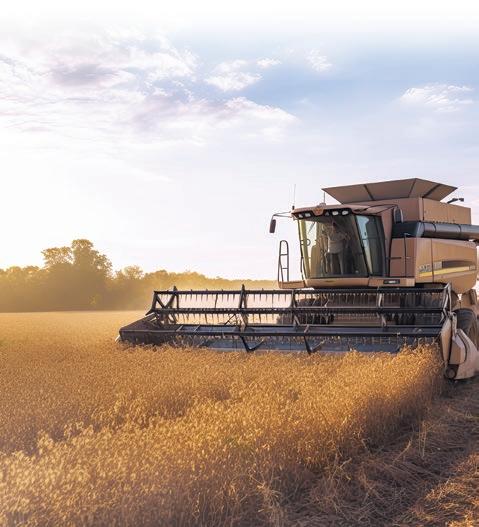














“A great friend of the cattle industry.”
It is with a deep sense of sorrow and loss that we have had to say goodbye to our trusted leader, loyal friend, caring mentor, and industry trailblazer.

Larry was an endless well of knowledge and expertise, and his devotion to our feedlot and the cattle industry was almost certainly unmatched.
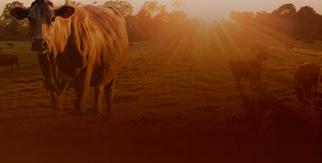


For over 25 years, Larry led Hamiota Feedlot with vision and dependability, with it becoming one of Manitoba’s largest feedlots. He generously helped so many people professionally and financially. His approachability and support helped foster a close-knit feedlot family through the years, and his quick wit, tenacious spirit, and selfless heart will be missed greatly. Beyond his own success, Larry used his passion and business acumen to advocate for the industry. He served on the Manitoba Beef Producers Board from 1998-2004 and led as the MCPA President through the BSE crisis. He also knew the ins and outs of national and international food policy. A man with exceptional negotiating skills and loads of common sense, Larry served as a director for the National Cattle Feeders Association from 2007-2015, and then as its chair from 2015-2017, successfully navigating tumultuous periods and leading the industry through some historic breakthroughs.
Larry, you have left impossibly large cowboy boots to fill. May your admirable legacy of passion for the industry live on through all of us. We will always cherish and remember the person behind that warm and inviting smile, that gentle heart, and enterprising spirit. With full confidence in the eternal promises of Jesus, we say, “Till we meet again Larry Schweitzer from Hamiota, Manitoba, Canada.”






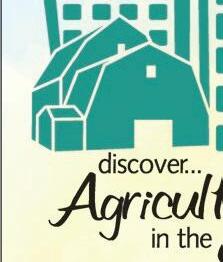












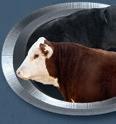
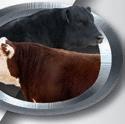





 Pam Iwanchysko Livestock and Forage Extension Specialist Manitoba Agriculture
Pam Iwanchysko Livestock and Forage Extension Specialist Manitoba Agriculture
pamela.iwanchysko@gov.mb.ca
Question: When is the right time to start grazing?
I am having some difficulty in balancing my pasture production to meet the needs of my herd and always seem to run out of pasture later in the grazing season. When is a good time to start thinking about how to improve my pasture management?
Answer: It is never too early to start planning better management strategies for moving animals in paddocks throughout the pastures. Now may be the perfect time to sit down and draw up some ideas. Rotational systems are the most important tool that livestock producers have, or can develop, to manage forage growth and supply throughout the season, but these require some forethought for effective use.
When the grass starts greening, the urge to get cattle on pasture is strong. However, patience and a little planning will pay off because management of the spring flush of forage availability is key to setting the tone for the entire grazing season. Remember, grazing one day too early in the spring will result in the loss of three days of grazing in the fall. Never use a calendar date as a target to start grazing. Soil temperatures and moisture determine when a plant grows, not a calendar.
In most species, the fi rst growth comes from reproductive buds that were formed the previous fall and is fueled by sugars, nitrogen, and minerals stored from the previous growing season. Legumes mostly store their reserves in below ground structures, such as crowns or rhizomes, while grasses store reserves in the lower part of stems. Grasses only store reserves below ground if rhizomes are present in species, such as smooth bromegrass, tall fescue, reed canary grass, and Kentucky bluegrass. Consequently, grazing grasses too early can reduce productivity because cattle will tend to graze the lower stem when nothing else is available.
during this phase because there is substantial leaf material to capture sunlight for photosynthesis. During this phase, the plant also replenishes the energy reserves of the root system. Phase III occurs when the plant matures, and new leaf growth is offset by the death of old leaves, flowering, and seed set. Growth slows, and forage palatability, quality, and digestibility generally decline.

Research has shown that, as a rule of thumb, producers should wait until they have three to four fully developed leaves on the grass stem before moving cattle out to pasture – otherwise known as Phase II. Monitor this regularly before putting the cattle out.
Productivity is maximized if pastures can be kept in Phase II of growth. Th is can be achieved by moving cattle into the pasture while plants are in Phase II and removing cattle before the plants are grazed hard enough to return to Phase I. Under rotational grazing circumstances, when grass averages only four to six inches tall, and at this stage of growth, cattle should be rotated rapidly through the paddocks, taking only the tops. As grass growth accelerates, this will help keep grass vegetative and stage regrowth over time for subsequent grazing cycles.
Plants have three phases of growth that form an ‘S’ shaped curve as demonstrated in the figure below as represented on the Beef Cattle Research Council website. Phase I occurs in the spring following dormancy or after a severe defoliation. During Phase I, the plant draws on root reserves to grow as there is little leaf material to intercept sunlight and gather energy. Phase II occurs when the plant reaches one quarter to one third of the mature plant’s size. The most rapid growth occurs
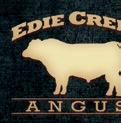

Paddock grazing sequence should also be planned so that paddocks that were grazed last in the fall are given extra spring rest, and not grazed early in spring. A different paddock should be grazed fi rst each year.

Aim for 70-90 days of rest and recovery in the active growing season before allowing the cattle to return. For example, if you only had 35 days of rest in the fall, you need to add an additional 35-60 days in the spring before the animals should be allowed to return to that paddock the following spring.
“We have purchased bulls from EDIE CREEK for many years. The bulls have worked hard and have all proven that they are easy calvers. We like that the bulls are raised the way we ranch. Our feeding style is low input and the bulls have flourished on it. The Bouws have built a great business that we can trust and we plan to be a customer for a long time.” - M. Rempel, Winnipegosis, MB
If you do not have any paddocks and are continuously grazing your pastures, it is never too late to sub-divide and allow time for rest and recovery of forages.







Use aerial photos to plan to subdivide pastures and estimate fencing costs. Name each paddock and keep good records of the days grazing on each paddock.
For more information on pastures and grazing management, please visit the Manitoba Agriculture website or speak with your local Manitoba Agriculture Livestock and Forage Specialist.
www.gov.mb.ca/agriculture/crops/crop-management/ forages/getting-started-with-intensive-grazing.html
In the next issue of Cattle Country, a Manitoba Agriculture forage or livestock specialist will answer a selected question. Send your questions to Elizabeth.Nernberg@gov.mb.ca.
StockTalk for Cattle Country is brought to you by Manitoba Agriculture. We encourage you to email your questions to our department’s forage and livestock team. We are here to help make your cattle operation successful. Contact us today.
Andrea Bertholet - Killarney 204-851-6087, Andrea.Bertholet@gov.mb.ca
Kristen Bouchard-Teasdale - Beausejour 431-337-1688, Kristen.BouchardTeasdale@gov.mb.ca
Shawn Cabak - Portage 204-239-3353, Shawn.Cabak@gov.mb.ca
Pam Iwanchysko - Dauphin 204-648-3965, Pamela.Iwanchysko@gov.mb.ca
Cindy Jack - Arborg 204-768-0534, Cindy.Jack@gov.mb.ca
Juanita Kopp - Beausejour 204-825-4302, Juanita.Kopp@gov.mb.ca
Elizabeth Nernberg - Roblin 204-247-0087, Elizabeth.Nernberg@gov.mb.ca
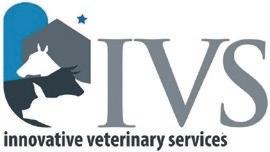
334
MB 204-727-7807 807
After a busy and stressful holiday season (keep in mind I’m writing this in January!), it dawned on me that I’d yet to create a recipe for this month’s issue! It’s funny how the craziness of life creeps up on you, right? As much as I love to cook, sometimes there are times where life is a tad overwhelming, and it seems the fi rst thing to go are homemade meals.
Convenient, ready-to-eat foods (or as we say in the biz, “CPG”‒ which stands for consumer packaged goods) sometimes get a bad rap for being cheap or unhealthy. Th is recipe uses some packaged, and canned ready-made products that ensure you can get this meal on the table in less than an hour, and even quicker if you
have an extra set of hands to help. To be clear, I’m totally not knocking convenience products as my friends and family know at any given time, I likely have some chicken nuggets in my freezer ready to go in the air fryer at a moment’s notice.
If you’ve read my previous articles, then you know that when I cook or create recipes, I love to use as many fresh ingredients as possible, not just for nutrients but also for the aesthetic. That being said, I’m also not opposed to pre-made convenience products when necessary.
If you feel like making your own fajita spice blend, enchilada sauce and or you’re really feeling motivated, your own tortillas, then kudos to you! But when postwork activities are callin’ or you just simply don’t want

Photo credit: Anna Borys
to (which is totally ok), this is a good way to get a meal on the table quickly, while not forfeiting completely on the “homemade” aspect. In fact, the only time I’ve ever made enchiladas before was in a meal subscription box and I have been wanting to make them again ever since, because they were so easy, so delicious and made the best leftovers. That’s pretty convenient if you ask me!
These enchiladas have lots of veggies in them, so you’re also not sacrificing nutrients, texture or a pop of colour. Steak is a great option, but I wouldn’t turn my nose up at these if you used ground beef, any other protein, or even a thick portobello for the vegetarian in your life.
Ingredients:
12 – 6” Flour Tortillas
350g Top Sirloin, sliced thinly
1 Onion, julienne
1 Green Bell Pepper, julienne
1 Red Bell Pepper, julienne
8 Mushrooms, sliced
3 Cups Tex-Mex Cheese Blend
3 Tbsp Fajita Seasoning
1 can (284mL) Red Enchilada Sauce Canola Oil Salt and Pepper
Garnish (optional):
Sour Cream Green Onion, slivered
Cilantro, chopped
METHOD:
1. Preheat oven to 400F and lightly grease a 9 x 13 baking dish.
2. Heat 1 Tbsp of canola oil in a large non-stick pan over high heat. Add steak and sauté until just browned. Season with salt and pepper. Add 1 Tbsp of Fajita Seasoning and 2 Tbsp of water and heat until steak becomes a bit saucy.
3. Remove steak from pan and add another Tbsp of canola oil. Add veggies and sauté until softened, about 5 minutes. Add the remaining 2 Tbsp of fajita seasoning and 4 Tbsp of water to create sauce.
4. Stir in Fajita Steak to vegetables and remove pan from heat.
TO ASSEMBLE/BAKE:
1. Lay one tortilla out and place a pinch of grated cheddar in the middle. Spoon some of the hot fajita mixture on top of cheese and add another small pinch of cheese on top.
2. Roll fajita up tightly, and place seam side down in pan.
3. Repeat with remaining tortillas until mixture is gone.
4. Pour enchilada sauce over top all wrapped tortillas and then top with remaining cheese.
5. Bake for about 16-20 minutes until browned and bubbling.
6. Allow to sit for 10 minutes before dishing out.
7. Top with sour cream, slivered green onion and chopped cilantro.